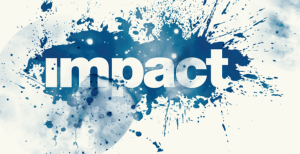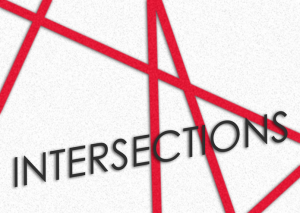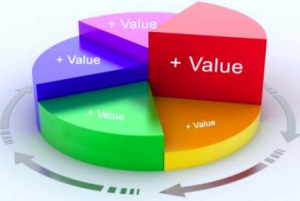 Two years can feel like a long time, exactly two years ago I wrote a post called “Making the appropriate impact” discussing my nine different impact points for innovation that needed combining.
Two years can feel like a long time, exactly two years ago I wrote a post called “Making the appropriate impact” discussing my nine different impact points for innovation that needed combining.
I wrote at the time we can have a surprisingly strong influence on impact, as we are in a highly connected world. It is through our organizing and influencing abilities we can all partly determine our innovation future.
I suggested we have nine impact points to consider:
- What are the triggers to growth
- How do we deal with our legacy issues
- What will offer us improving performance
- The place of tacit knowledge
- Our ability to build platforms and road-maps to build engagement.
- The absolute skill of execution
- How we set about adapting to change
- What is important to empower and provide trusting environments
- How should we measure success in appropriate impact.
So let me take this one step further.
For me the book “The Medici Effect” written by Frans Johansson holds an important place in my thinking. “Our breakthrough insights are at the Intersections of ideas, concepts and cultures” and it is the potential of exploring these intersections comes our high points of impact.
Impact has to have reasons, it has to unite and it has to have understanding of what gives it that different ‘impact’.
Our leadership today has tended to forget “positive” impact within their chase of the short-term; they are contributing more “negative” impacts in the pursuit of immediate gain. We need to institute a change in thinking.
Recently a new book came out, called “Moments of Impact” written by Chris Ertel and Lisa Kay Solomon. It is a wonderful book in that it describes the pathway to how too “design strategic conversations that accelerate change”. It tackles the way to deliver complex questions in clear ways and brings back that critical understanding of “empathy” for broader groups to relate to, by listening, detecting patterns and then they can be deciphered in what needs changing.
So our ability to listen, to discern patterns and to seek out new impact points through more intersection points does offer for a real potential to really change the game. These can be at global, organizational, social, competitive and personal levels of impact.
Where do we start to deliver positive impact though?

Besides reading the two books mentioned above let me lay out the purpose in a group of ideas where one feeds off of the other, they mutually reinforce each other. The strength is in the combining forces.
There are a group of ideals I like to offer up as ones to ‘gather around’ for higher impact returns, to ‘enable’ our potential. These are:
- We need to connect new knowledge with increasing good emerging practice
- We need to foster increasingly the trust and identification needed to explore and exploit
- We need to strengthen our alignments and look to offer appreciation more
- We need to build within ourselves more responsiveness and agility
- We need to understand the impact of our actions and decisions and what these really mean to our business, the society and the people within it
- We have to reduce leakage- that constant knowledge loss that leads to depreciation within our performances, we need to constantly renew ourselves.
- We need to sharpen our minds and gain more confidence in the choices we are making, the avenues of our creation to lead towards a new wealth, growth and set of values.
Where I put my focus is on the intersections of combining four value building vectors

Firstly we have innovation
Innovation needs a sharper meaning and focus within our organizations, it needs to be ‘crafted’ far more, and it needs to have a greater alignment and validation. It needs increased facilitation and understanding. We need to change many of our existing innovation practices that we perform into ones that deliver this increasing impact.
We need to look simply beyond ‘just’ innovation in product and services, we have to link this more into our social needs, to design different business models that give opportunity for different organization design, agility and vitality.
We are far too often stuck in the incremental mode and must find ways to get out of this rut or we never achieve ‘real impact’ and move the growth needle to a stronger value point.
Secondly we need to seek out more value-based relationships.
These need to be broader, closer and allowed to be more imaginative in cooperation and outcomes. We need to seek out different ‘pools’ of knowledge and complementary expertise.
We should leverage for all it’s worth our collaborative, network, technology skills to explore and push boundaries for discovery.
We need to have in place some mechanisms that allow for a greater choreographing of specific events and growing knowledge understanding to be able to come together due to this value-based set of relationships so we provide for more moments of impact.
Third, we need to enhance economic value as our business goal
This comes through clarity of purpose, alignment and collaboration. We need to scan our markets, our competitors and the changes constantly happening in our market environments to gather increased insights. We need to hone our selection and design of new solutions by better scanning and investigating,
We need to think of impact in different ways, ways like containment, improvement, reduction, improvements and efficiency. We need to consciously seek strategies that DRIVE growth.
Lastly, we have the application of knowledge to learn and apply
We need to learn how to trade in the new economy, the one called the idea economy. This is the place where we learn, grow, seek out impact and grow. It is the intelligence within our broader capitals, those often called the intellectual capitals made up of social, human, structural, relationship and learning.
It is by finding new combinations within these different capitals we learn to combine resources, capabilities and competencies in new and different ways. To achieve a growing positive impact we need to develop problem-solving abilities, we need to be allowed to visualize far more and to explore these ‘concepts’ more freely.
We need to focus on the creation, exchanging and acquisition of new knowledge. We need to release all the ‘idle capital’ that lies all around us to bring it back into contributing value.
We need to combine these four intersections for seeking out the positive impact.
 It is finding the future value-creating points where you can extract the hidden values waiting to be discovered.
It is finding the future value-creating points where you can extract the hidden values waiting to be discovered.
We need to promote the “thinking experience” and develop in us all the three parts, firstly of inductive thinking through direct observation, then the use of deductive thinking from analysis and logic and finally, the abductive thinking of determining what could be possible and valuable
We need to relearn how we work, how we think and how we search to combine. Our knowledge learning capacities provide the solutions to the delivery of high impact areas where we all gain in growth and wealth creation.
A time to re-equip ourselves in new ways is way overdue.
It is time we learn how to combine these intersections within our organizations. It is partly a rediscovery but it is far more a growing discovery of what is simply all around us, waiting for the right way for it to be found.
This comes from a ‘greater’ combining of different ideas, seeking out new combination, exploring different intersections that can lead to new insights for breakthroughs for innovation to happen, and then delivering these higher-value impact points we need to prosper and thrive.
The insight on exploring new concepts more freely is very powerful: too often innovation processes tend to constraint and standardize the way we look at ideas, so that they are comparable and measurable. But often times these constraints make concept all look alike, all look so plain.